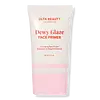What's inside
What's inside
 Key Ingredients
Key Ingredients

 Benefits
Benefits

 Concerns
Concerns

 Ingredients Side-by-side
Ingredients Side-by-side

Water
Skin ConditioningPropanediol Dicaprylate
EmollientGlycerin
HumectantGlyceryl Stearate
EmollientHydrogenated Polyisobutene
EmollientPentylene Glycol
Skin ConditioningC12-15 Alkyl Benzoate
AntimicrobialCocos Nucifera Fruit Juice
EmollientTrilaureth-4 Phosphate
EmulsifyingPhenoxyethanol
PreservativeSodium Hyaluronate
HumectantCarbomer
Emulsion StabilisingCetyl Alcohol
EmollientCeteareth-12
EmulsifyingCeteareth-20
CleansingCaprylyl Glycol
EmollientPersea Gratissima Oil
Skin ConditioningSimmondsia Chinensis Seed Oil
EmollientSodium Hydroxide
BufferingAloe Barbadensis Leaf Extract
EmollientEthylhexylglycerin
Skin ConditioningPropylene Glycol
HumectantTocopheryl Acetate
AntioxidantParfum
MaskingAscorbyl Palmitate
AntioxidantWater, Propanediol Dicaprylate, Glycerin, Glyceryl Stearate, Hydrogenated Polyisobutene, Pentylene Glycol, C12-15 Alkyl Benzoate, Cocos Nucifera Fruit Juice, Trilaureth-4 Phosphate, Phenoxyethanol, Sodium Hyaluronate, Carbomer, Cetyl Alcohol, Ceteareth-12, Ceteareth-20, Caprylyl Glycol, Persea Gratissima Oil, Simmondsia Chinensis Seed Oil, Sodium Hydroxide, Aloe Barbadensis Leaf Extract, Ethylhexylglycerin, Propylene Glycol, Tocopheryl Acetate, Parfum, Ascorbyl Palmitate
Water
Skin ConditioningPentaerythrityl Tetraethylhexanoate
EmollientGlycerin
HumectantIsopropyl Isostearate
EmollientPPG-15 Stearyl Ether
EmollientNiacinamide
SmoothingHydroxyethyl Urea
HumectantSodium Polyaspartate
HumectantAlgae Extract
EmollientCaffeine
Skin ConditioningLactobacillus Ferment
Skin ConditioningYeast Extract
Skin ConditioningLycium Chinense Fruit Extract
AntioxidantRosa Hybrid Flower Extract
Skin ConditioningVaccinium Macrocarpon Fruit Extract
AstringentVaccinium Angustifolium Fruit Extract
Skin ProtectingTrehalose
HumectantSodium Hyaluronate
HumectantPantethine
EmollientSorbitol
HumectantTocopheryl Acetate
AntioxidantCaprylyl Glycol
EmollientButylene Glycol
HumectantHdi/Trimethylol Hexyllactone Crosspolymer
Acrylates/C10-30 Alkyl Acrylate Crosspolymer
Emulsion Stabilising1,2-Hexanediol
Skin ConditioningXanthan Gum
EmulsifyingSodium Hydroxide
BufferingDisodium EDTA
Propanediol
SolventNylon-12
Silica
AbrasiveBHT
AntioxidantPhenoxyethanol
PreservativePotassium Sorbate
PreservativeWater, Pentaerythrityl Tetraethylhexanoate, Glycerin, Isopropyl Isostearate, PPG-15 Stearyl Ether, Niacinamide, Hydroxyethyl Urea, Sodium Polyaspartate, Algae Extract, Caffeine, Lactobacillus Ferment, Yeast Extract, Lycium Chinense Fruit Extract, Rosa Hybrid Flower Extract, Vaccinium Macrocarpon Fruit Extract, Vaccinium Angustifolium Fruit Extract, Trehalose, Sodium Hyaluronate, Pantethine, Sorbitol, Tocopheryl Acetate, Caprylyl Glycol, Butylene Glycol, Hdi/Trimethylol Hexyllactone Crosspolymer, Acrylates/C10-30 Alkyl Acrylate Crosspolymer, 1,2-Hexanediol, Xanthan Gum, Sodium Hydroxide, Disodium EDTA, Propanediol, Nylon-12, Silica, BHT, Phenoxyethanol, Potassium Sorbate
Ingredients Explained
These ingredients are found in both products.
Ingredients higher up in an ingredient list are typically present in a larger amount.
Caprylyl Glycol is a humectant and emollient, meaning it attracts and preserves moisture.
It is a common ingredient in many products, especially those designed to hydrate skin. The primary benefits are retaining moisture, skin softening, and promoting a healthy skin barrier.
Though Caprylyl Glycol is an alcohol derived from fatty acids, it is not the kind that can dry out skin.
This ingredient is also used as a preservative to extend the life of products. It has slight antimicrobial properties.
Learn more about Caprylyl GlycolGlycerin is already naturally found in your skin. It helps moisturize and protect your skin.
A study from 2016 found glycerin to be more effective as a humectant than AHAs and hyaluronic acid.
As a humectant, it helps the skin stay hydrated by pulling moisture to your skin. The low molecular weight of glycerin allows it to pull moisture into the deeper layers of your skin.
Hydrated skin improves your skin barrier; Your skin barrier helps protect against irritants and bacteria.
Glycerin has also been found to have antimicrobial and antiviral properties. Due to these properties, glycerin is often used in wound and burn treatments.
In cosmetics, glycerin is usually derived from plants such as soybean or palm. However, it can also be sourced from animals, such as tallow or animal fat.
This ingredient is organic, colorless, odorless, and non-toxic.
Glycerin is the name for this ingredient in American English. British English uses Glycerol/Glycerine.
Learn more about GlycerinPhenoxyethanol is a preservative that has germicide, antimicrobial, and aromatic properties. Studies show that phenoxyethanol can prevent microbial growth. By itself, it has a scent that is similar to that of a rose.
It's often used in formulations along with Caprylyl Glycol to preserve the shelf life of products.
Sodium Hyaluronate is hyaluronic acid's salt form. It is commonly derived from the sodium salt of hyaluronic acid.
Like hyaluronic acid, it is great at holding water and acts as a humectant. This makes it a great skin hydrating ingredient.
Sodium Hyaluronate is naturally occurring in our bodies and is mostly found in eye fluid and joints.
These are some other common types of Hyaluronic Acid:
Learn more about Sodium HyaluronateSodium Hydroxide is also known as lye or caustic soda. It is used to adjust the pH of products; many ingredients require a specific pH to be effective.
In small amounts, sodium hydroxide is considered safe to use. However, large amounts may cause chemical burns due to its high alkaline.
Your skin has a natural pH and acid mantle. This acid mantle helps prevent harmful bacteria from breaking through. The acid mantle also helps keep your skin hydrated.
"Alkaline" refers to a high pH level. A low pH level would be considered acidic.
Learn more about Sodium HydroxideTocopheryl Acetate is AKA Vitamin E. It is an antioxidant and protects your skin from free radicals. Free radicals damage the skin by breaking down collagen.
One study found using Tocopheryl Acetate with Vitamin C decreased the number of sunburned cells.
Tocopheryl Acetate is commonly found in both skincare and dietary supplements.
Learn more about Tocopheryl AcetateWater. It's the most common cosmetic ingredient of all. You'll usually see it at the top of ingredient lists, meaning that it makes up the largest part of the product.
So why is it so popular? Water most often acts as a solvent - this means that it helps dissolve other ingredients into the formulation.
You'll also recognize water as that liquid we all need to stay alive. If you see this, drink a glass of water. Stay hydrated!
Learn more about Water